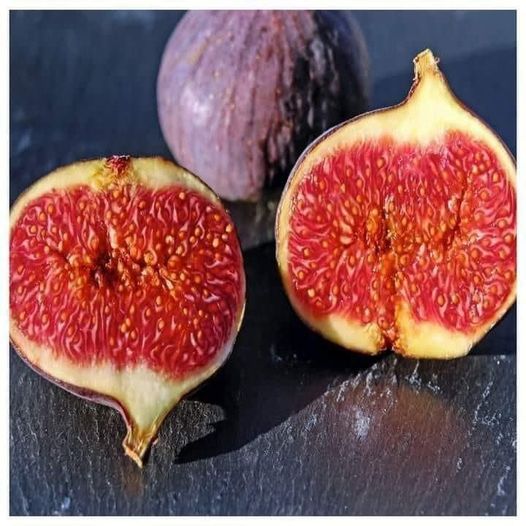Figs Aren’t a Fruit, They’re a Flower, and They Have Insects Inside
In the world of fruity delights, figs have held a special place for centuries.
What many don’t know, however, is that these tempting delicacies aren’t exactly what they seem at first glance.
More than just juicy fruits, figs are actually inverted flowers with an intriguing secret: the presence of tiny winged tenants.
The Truth Behind the Appearance: At first glance, figs may look like ordinary fruits, but closer inspection reveals their true nature.
Scientifically classified as “sycones,” figs are flowers that develop internally.
The fleshy, sweet pulp we enjoy is actually the result of a unique transformation, where the flowers turn inward and create an edible structure.
The Intriguing Process of Pollination: The symbiotic relationship between figs and insects is a wonder of nature.
Fig pollination occurs not by wind or bees, but by a specialized variety of wasp called Blastophaga psenes. These tiny creatures are critical to fig reproduction.
When a female wasp enters a male fig, she carries pollen from male flowers to the female flowers. As she lays her eggs, the fig plant ripens, creating that sweet treat we know.
Unexpected Tenants: Now, the most surprising fact: figs are not just upside-down flowers, but they also host their own tenants.
When female wasps lay their eggs inside figs, some offspring do not survive and become an integral part of the fig’s interior.
While it may sound puzzling, it is a natural phenomenon and completely harmless to humans.
In addition, the figs we find in markets are usually of the parthenocarpic type, meaning they develop without the need for the presence of wasps.
How to Enjoy Figs: Despite their surprising natural history, figs are a healthy and versatile delight in the kitchen.
They can be enjoyed fresh, dried, or as part of sweet and savory dishes.
Their natural sweetness pairs beautifully with cheeses, blends well into salads, and adds a special touch to desserts.
Bottom Line: In conclusion, the story of figs goes beyond just being a fruit. These little treasures are upside-down flowers that have developed a unique relationship with wasps for reproduction.
While the idea of insects inside may seem disconcerting, it is a natural and essential part of the fig’s life.
The next time you enjoy this delicious fruit, remember the fascinating history hidden behind its unassuming appearance.
